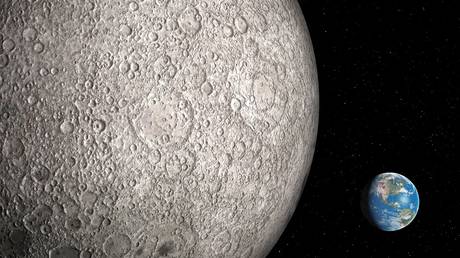Study makes claim on how Moon emerged
A supercomputer simulation suggests that the Moon formed within hours from a single impact to Earth. source:TROIB RTS

A supercomputer simulation suggests it formed quite rapidly after a larger body hit Earth
The Moon may have formed in hours, rather than in months or years as has been believed, according to an advanced astrophysical model devised by NASA scientists with the aid of supercomputers, and published last week in the Astrophysical Journal Letters.
Using a higher resolution than was available at the time that the widely-accepted theory of the Moon’s origin was devised, in which a Mars-sized body called Theia hits a primitive Earth some 4.5 billion years ago, and the resulting debris coalesces into the Moon over a period of months or years, the model shows the satellite forming much more rapidly from material originating from both Earth and Theia.
The simulation shows Theia, a Mars-sized planet, colliding with a mini-Earth. The outer crust of the planets is thrown into orbit from the impact, quickly coalescing into two unstable satellites, the smaller of which stabilizes into the Moon, while the larger is reabsorbed into Earth.
The new theory helps explain why the Moon shares a similar mineral composition with Earth, particularly towards its crust – an attribute which is difficult to explain if it is supposed to be composed almost entirely of debris from Theia, as the prevailing theory holds.
READ MORE: NASA selects potential Moon landing sites
Other existing theories that purport to explain the similarity in chemical composition between Earth and its satellite, like the synestia theory that suggests the Moon formed inside a swirl of vaporized rock from the collision of Theia with Earth, do not satisfactorily account for its orbit.
NASA hopes to use similarly advanced high-resolution modeling in conjunction with new samples brought back from its planned Artemis missions to test this and other theories of the Moon’s evolution. The astronauts of Artemis, the US space agency’s much-hyped return to manned space missions, will be tasked with taking specimens from deeper beneath the Moon’s surface, as well as from seldom-explored parts of the satellite, though the operation’s launch remains plagued by delays and technical malfunctions.
Discover more Science and Technology news updates in TROIB Sci-Tech












